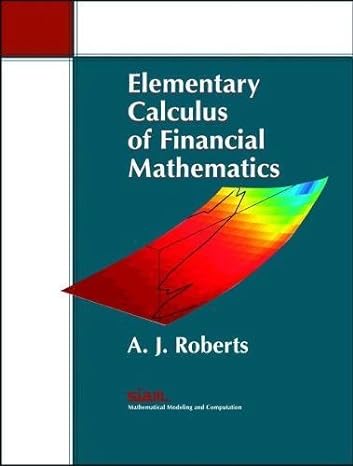2.11. Consider the BlackScholes equation (2.6) with zero volatility: C t +rS C S = rC. Show...
Question:
2.11. Consider the Black–Scholes equation (2.6) with zero volatility:
∂C
∂t
+rS
∂C
∂S
= rC.
Show by algebraic differentiation that C = f(Se−rt)ert satisfies this PDE for any differentiable function f.
Now suppose you are considering some option with specified value at the expiry time T, say CT(S). Deduce that the above function f(S) = CT(RS)/R, where R =
erT. Hence argue that all points on the specified curve (ST,CT) (where ST denotes the value of the asset at expiry) are mapped by the above PDE to points (S,C) at time t = 0 by the simple contraction mapping S = ST/R and C = CT/R . Thus comment on how the Black–Scholes equation (2.6) with nonzero volatility predicts that the initial value of an option is just a smoothed version of the final value, but scaled by the factor 1/R.
Step by Step Answer:

Elementary Calculus Of Financial Mathematics
ISBN: 978-0898716672
1st Edition
Authors: A. J. Roberts Edition





